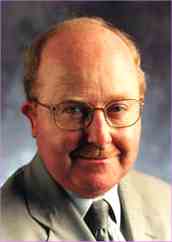|
Caithness.org News Bulletins |
|||
| Dounreay Index | |||
|
Dounreay |
|||
|
ROSS FINNIE DELIVERS MILESTONE IN SITE RESTORATION
The milestone was reached when Ross Finnie pressed the button on a 2000-tonne supercompactor that crushes drums of waste to a fifth of their size after they have gone through a series of quality control checks. Mr Finnie, whose Ministerial portfolio includes the current review of radioactive waste management in Scotland, consigned the 10,000th drum through the new WRACS (pronounced RAX) plant during a fact-finding visit to the site. He also learned how UKAEA is developing stakeholder participation in the site restoration plan, and how Dounreay was the first site of its kind in the world to publish its entire programme of work on the Internet. Mr Tony Wratten, Dounreay’s head of waste management, said: “Restoring the environment of the site will generate substantial quantities of radioactive waste in the years of ahead. The new WRACS plant is a good example of the importance that is attached to its safe and efficient management at Dounreay. “I was delighted that the Minister was able to process the 10,000th drum through WRACS since it opened a year ago. It is recognition of the excellent performance that has been achieved by staff and the high standards they are setting in the management of radioactive waste.” Solid low-level radioactive waste arises wherever radioactive materials are used. It includes metals and concrete, glass, ceramics and other materials, such as polythene sheets, plastic gloves and paper towels. WRACS (Waste Receipt Assay Characterisation and Supercompaction) took four years to design and build and came into operation in August 2001. After supercompaction of the drums, the "pucks" are transferred to half-height ISO containers that are stored at Dounreay. UKAEA is currently preparing a Best Practicable Environmental Options (BPEO) study for the management of all solid LLW arising from the site restoration plan and will consult stakeholders on the options. In the meantime, UKAEA has complied with a requirement of its regulators and applied to the Scottish Environment Protection Agency for consent to dispose of some of its LLW arisings at Dounreay to the national disposal facility at Drigg in Cumbria. |
|||
 Scotland’s
Minister for Environment and Rural Development today consigned the
10,000th drum of low-level radioactive waste from the site restoration of
Dounreay through a new £6 million treatment plant at the site.
Scotland’s
Minister for Environment and Rural Development today consigned the
10,000th drum of low-level radioactive waste from the site restoration of
Dounreay through a new £6 million treatment plant at the site.